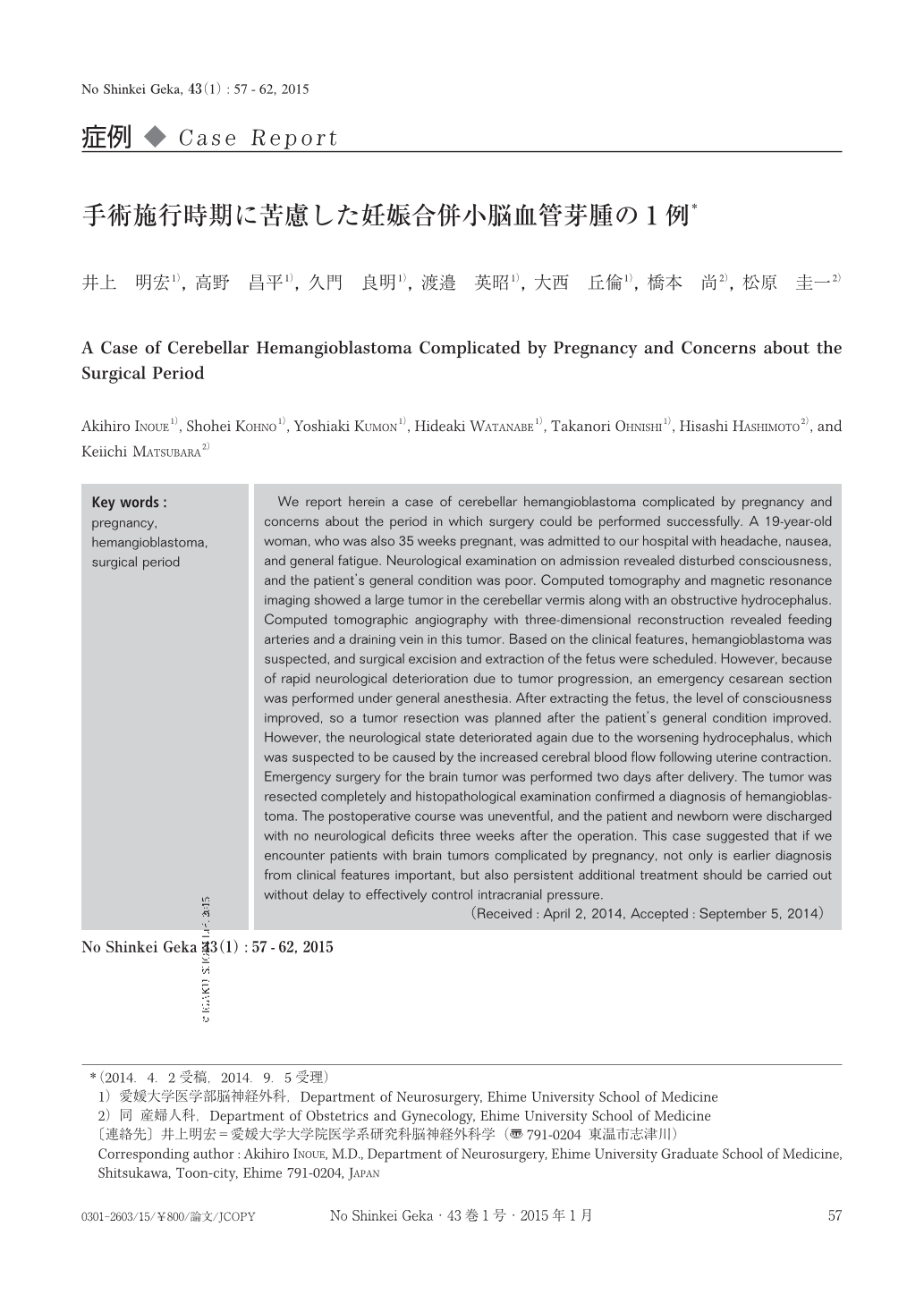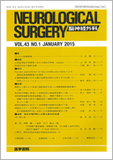Japanese
English
- 有料閲覧
- Abstract 文献概要
- 1ページ目 Look Inside
- 参考文献 Reference
Ⅰ.はじめに
妊娠中の脳腫瘍合併率は非妊娠時と変わらず10,000人に1例とされているが,脳腫瘍合併妊娠による母体死亡は全母体死亡の約8%を占め,その周産期管理は極めて重要となる1,7).今回われわれは,手術施行時期に苦慮した妊娠合併小脳血管芽腫の症例を経験したので,文献的考察を加え報告する.
We report herein a case of cerebellar hemangioblastoma complicated by pregnancy and concerns about the period in which surgery could be performed successfully. A 19-year-old woman, who was also 35 weeks pregnant, was admitted to our hospital with headache, nausea, and general fatigue. Neurological examination on admission revealed disturbed consciousness, and the patient's general condition was poor. Computed tomography and magnetic resonance imaging showed a large tumor in the cerebellar vermis along with an obstructive hydrocephalus. Computed tomographic angiography with three-dimensional reconstruction revealed feeding arteries and a draining vein in this tumor. Based on the clinical features, hemangioblastoma was suspected, and surgical excision and extraction of the fetus were scheduled. However, because of rapid neurological deterioration due to tumor progression, an emergency cesarean section was performed under general anesthesia. After extracting the fetus, the level of consciousness improved, so a tumor resection was planned after the patient's general condition improved. However, the neurological state deteriorated again due to the worsening hydrocephalus, which was suspected to be caused by the increased cerebral blood flow following uterine contraction. Emergency surgery for the brain tumor was performed two days after delivery. The tumor was resected completely and histopathological examination confirmed a diagnosis of hemangioblastoma. The postoperative course was uneventful, and the patient and newborn were discharged with no neurological deficits three weeks after the operation. This case suggested that if we encounter patients with brain tumors complicated by pregnancy, not only is earlier diagnosis from clinical features important, but also persistent additional treatment should be carried out without delay to effectively control intracranial pressure.

Copyright © 2015, Igaku-Shoin Ltd. All rights reserved.


